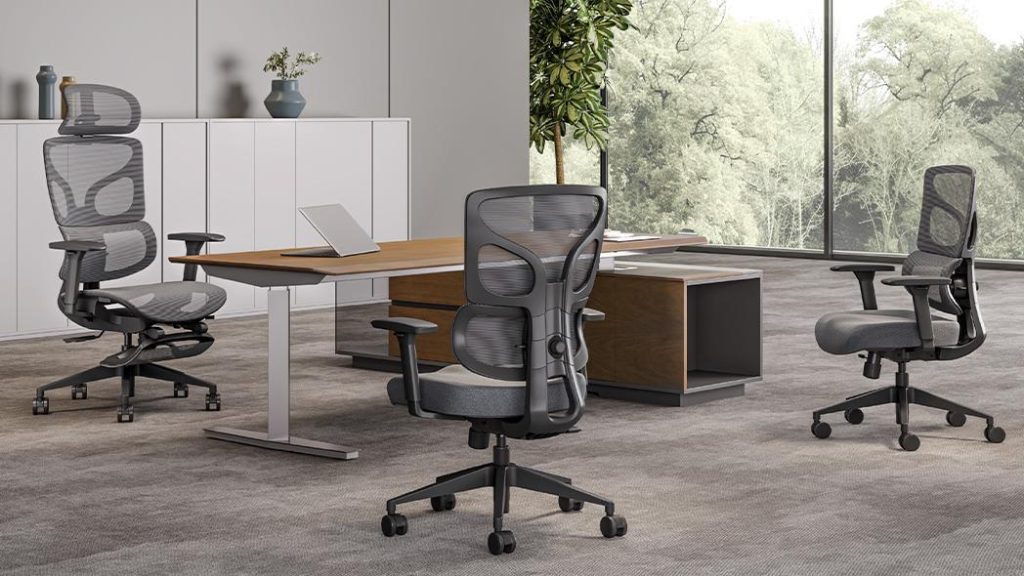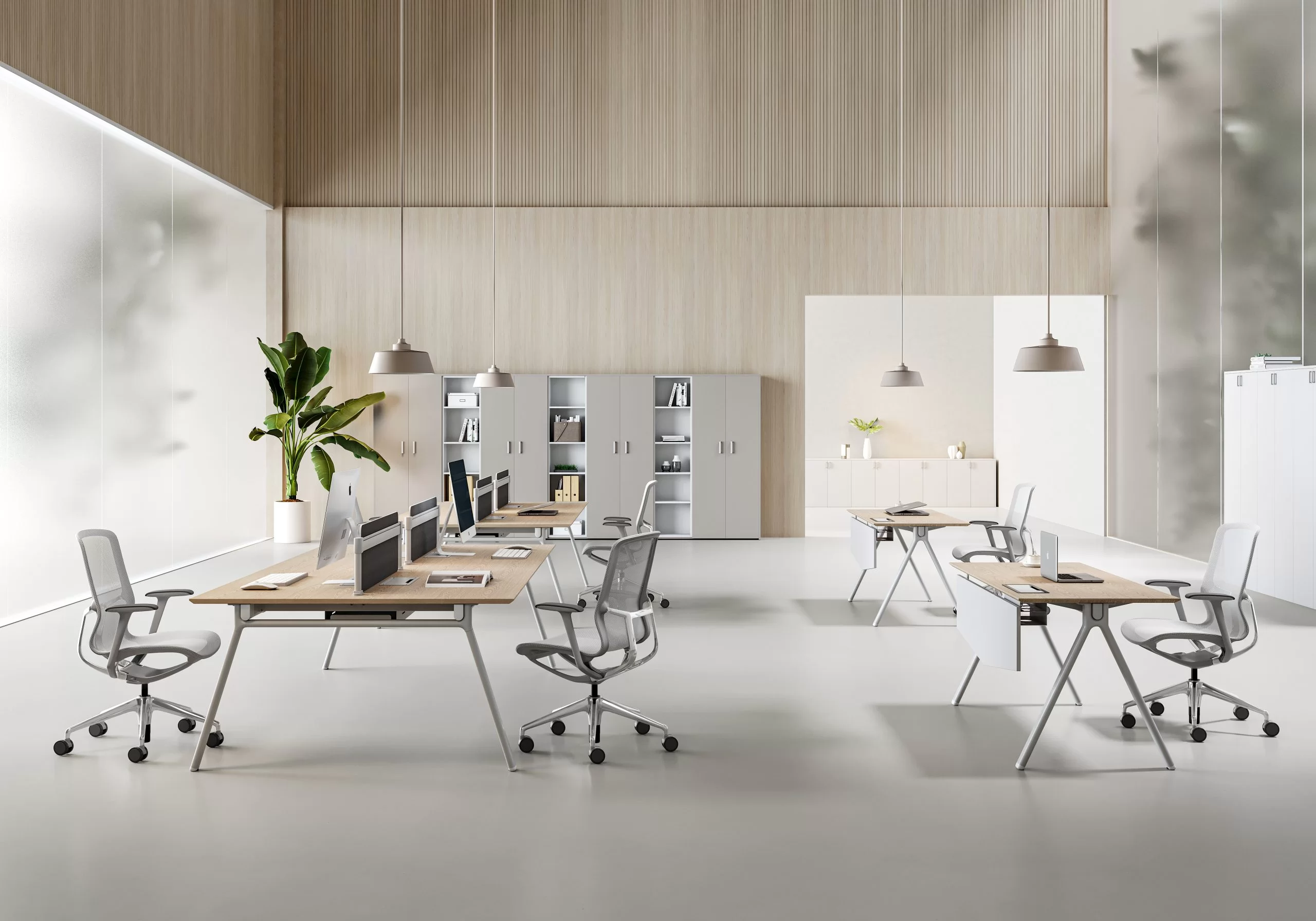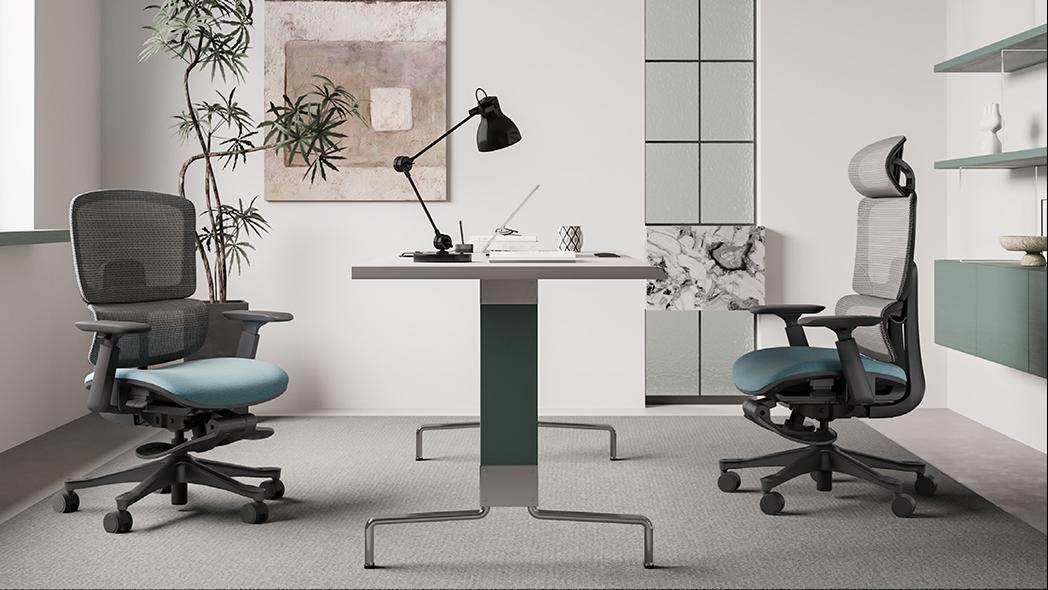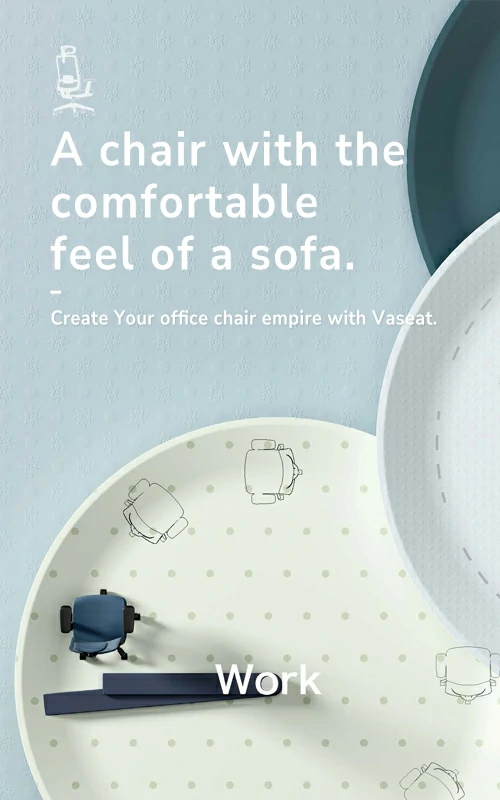If you’re shopping for an office chair, you’ve probably asked yourself: "High back chair vs mid back chair — which should I pick?" With so many options available, it helps to understand how different backrest heights affect posture, ergonomics, and workspace style. We design both chair types to support modern office needs, so this guide will help you choose confidently.
What Is a Mid-Back Chair?
A mid-back chair typically features a back-rest that reaches up to the shoulder blades or slightly above. It supports the lower and middle back but does not extend to the neck or head. It keeps your posture upright and comfortable during regular work sessions, while maintaining a sleek footprint that works well in compact or shared offices.
Best for:
- Agile work environments
- Short to moderate sitting periods
- Smaller workspace layouts
- People who prefer lighter chairs with flexible movement
What Is a High-Back Chair?
In contrast, a high-back chair includes a tall backrest that extends above the shoulders and often supports the neck and head via a built-in or adjustable headrest. It helps maintain proper alignment from your lumbar area through the upper back, reducing fatigue during extended hours at a desk.
Best for:
- Long working sessions
- Reclined posture and relaxation
- Taller users
- Workspaces seeking an executive look
Key Differences: High Back Chair vs Mid Back Chair
| Feature | Mid-Back Chair | High-Back Chair |
|---|---|---|
| Backrest height | Up to shoulder blades | Above shoulders, includes neck/head support |
| Headrest | Rarely included | Often built-in or adjustable |
| Mobility & space | More compact, lighter | Bulkier, heavier, may require more space |
| Sitting duration | Suitable for moderate periods | Better for extended hours |
| Cost | Often more budget-friendly | Typically higher price due to extra features |

How to Choose the Right Back Height
- Consider your sitting duration.
If you’re seated for 6-8+ hours and require head/neck support, a high-back model likely suits you better. For short sessions or agile workspaces, mid-back may suffice. - Evaluate your workspace layout.
Do you have the room to accommodate a high-back chair? Mid-back fits tighter spaces. - Check your posture habits and body type.
If you lean back or are taller, high-back gives extra coverage. If you lean forward or switch tasks often, mid-back supports mobility. - Budget & adjustability.
Determine how much you value head-rest, recline, adjustable lumbar features, and then choose accordingly. - Match your brand/office style.
Our high-back and mid-back chairs both offer quality mechanisms and ergonomic support — so you can match the style to your space and role.
Why Choose VASEAT Ergonomic Chairs
Every chair is engineered around comfort, premium mechanisms, and durable materials. Whether you want the executive presence of a high-back chair or the agile profile of a mid-back chair, you’ll enjoy:
- Targeted spine support
- Sleek modern design for workplace environments
- Flexible ergonomic adjustments
- Durable materials built for daily use
And if you’re exploring how to choose the right ergonomic chair, our team can guide you in selecting the perfect model tailored to your posture, workspace size, and daily routine.
Frequently Asked Questions
Q: Is a high-back chair always better?
A: Not always. While it offers more coverage, it may be over-engineered for short-duration tasks or smaller workspaces. The best choice depends on your use case.
Q: Can a mid-back chair support upper-back discomfort?
A: Yes — if it includes good lumbar support and you maintain proper posture. But if neck/upper-back strain is common, consider a high-back.
Q: What height is ideal?
A: Ensure your feet are flat on the floor, knees at ~90°, elbows at desk height, and backrest aligned with your lumbar curve. Adjustability matters more than raw height alone.
Conclusion
Choosing between a high back chair vs mid back chair comes down to your sitting habits, workspace size and posture support needs. For high-volume seated work, head/neck support and premium presence lean toward high-back. For shorter sessions, flexible movement and space savings lean toward mid-back.
At VASEAT, whether you go high-back or mid-back, you’re investing in comfort, adjustability and quality. Select the chair that fits your workflow — your spine will thank you.



